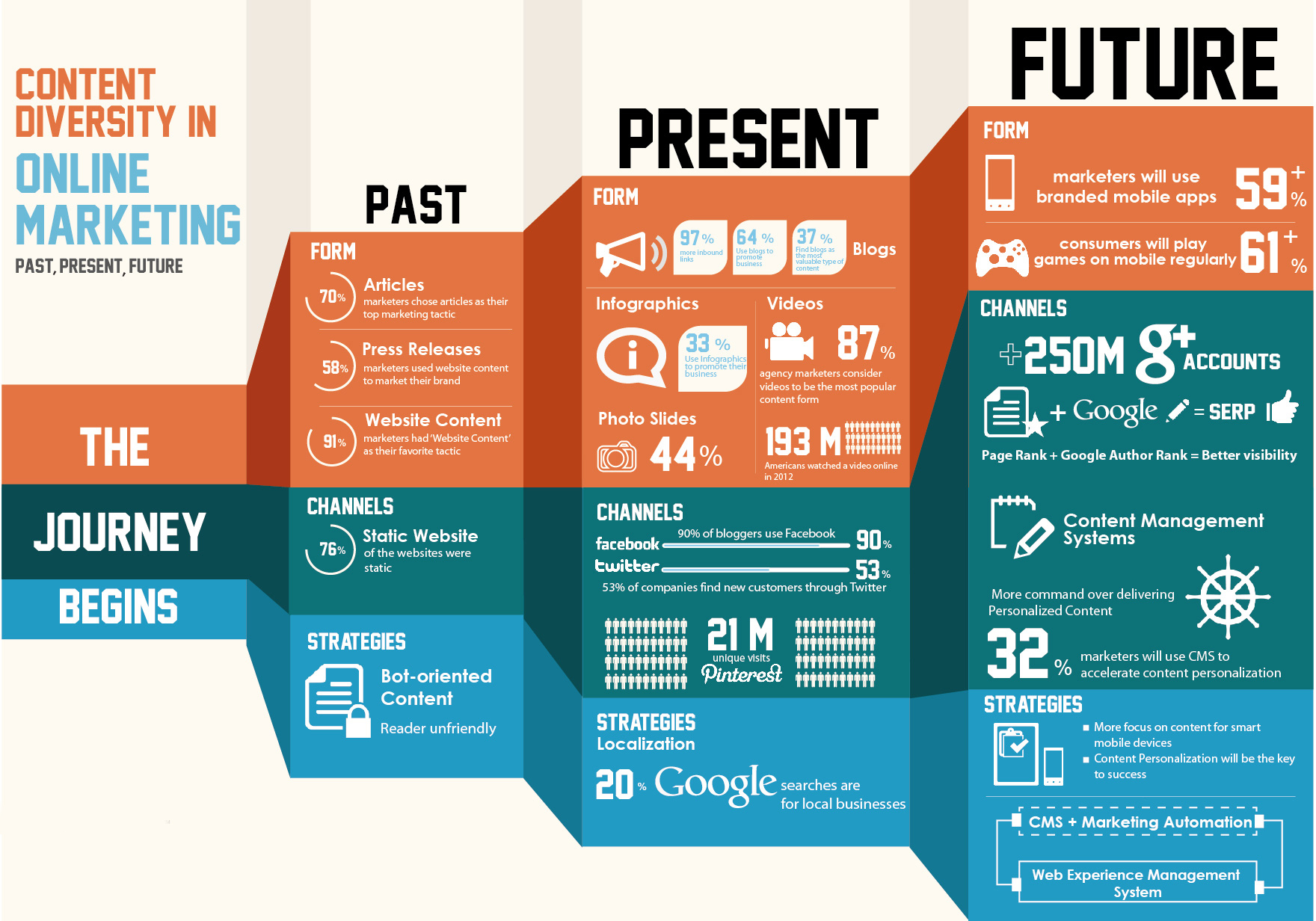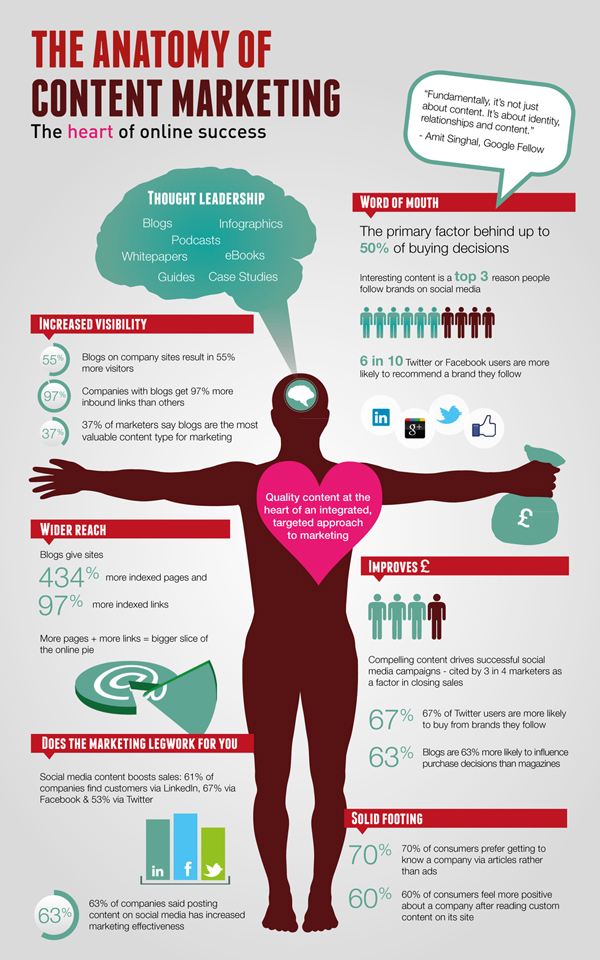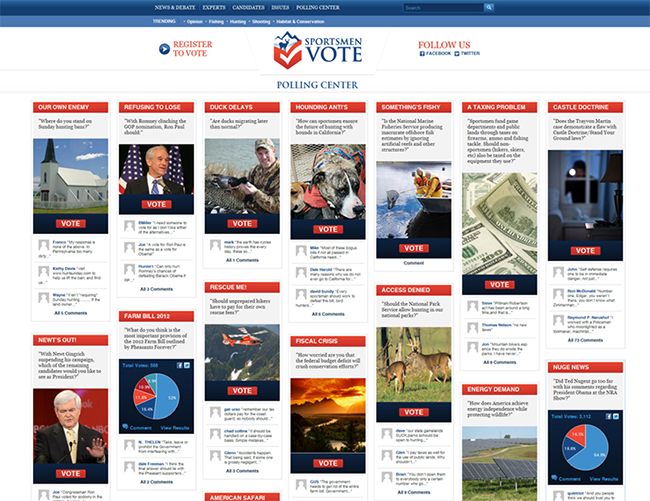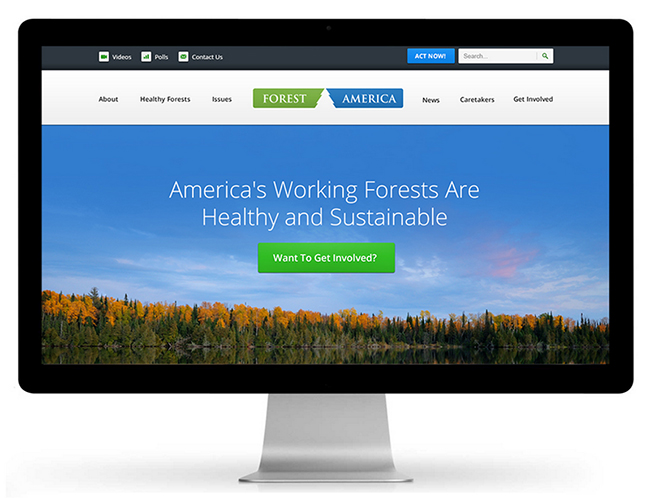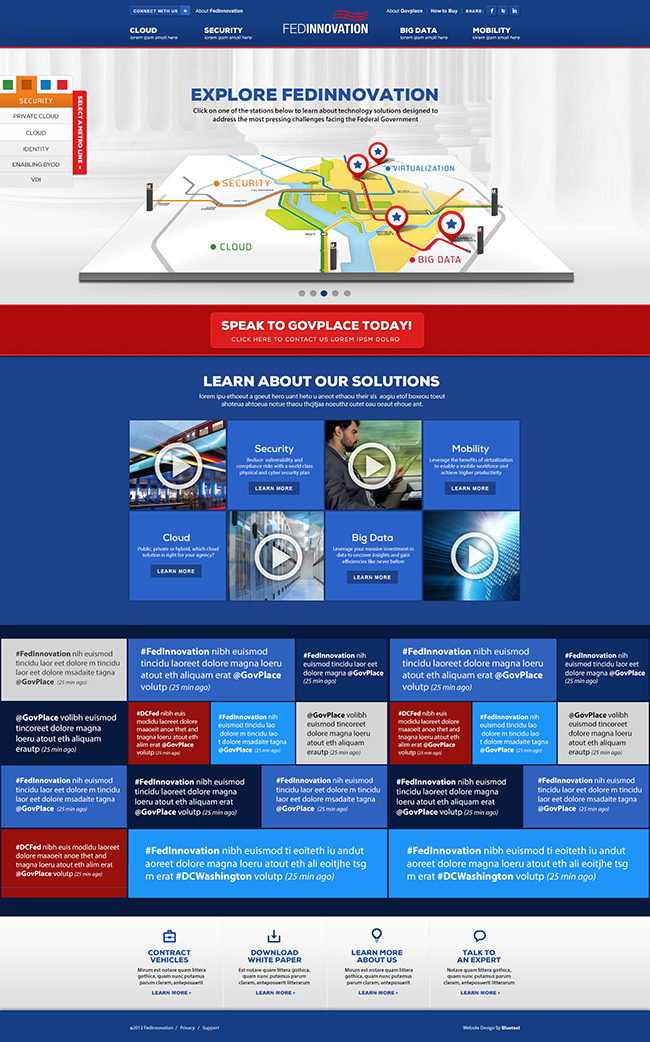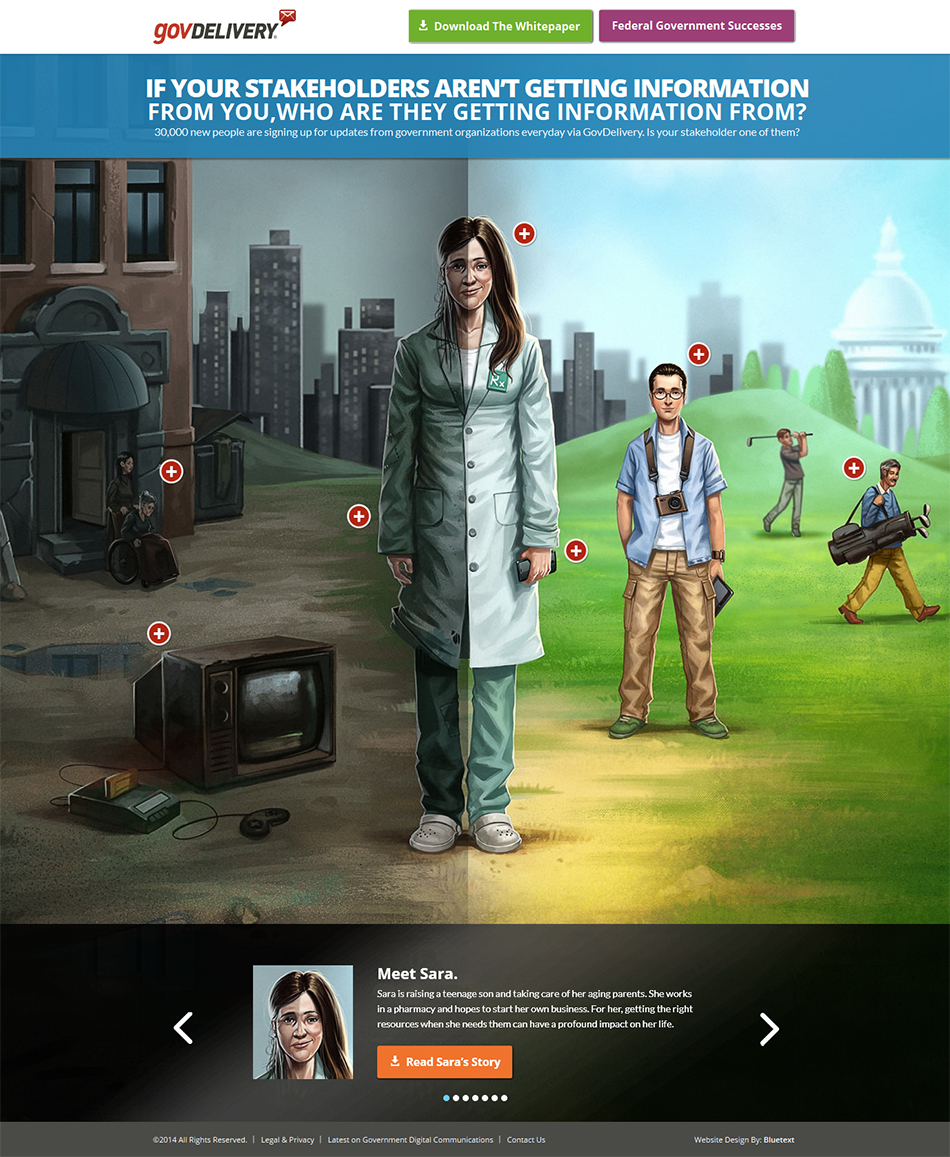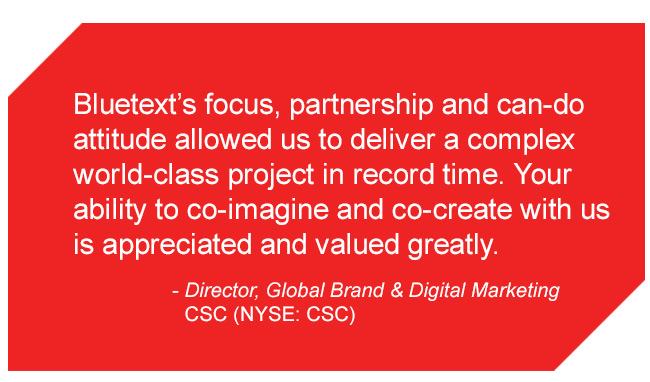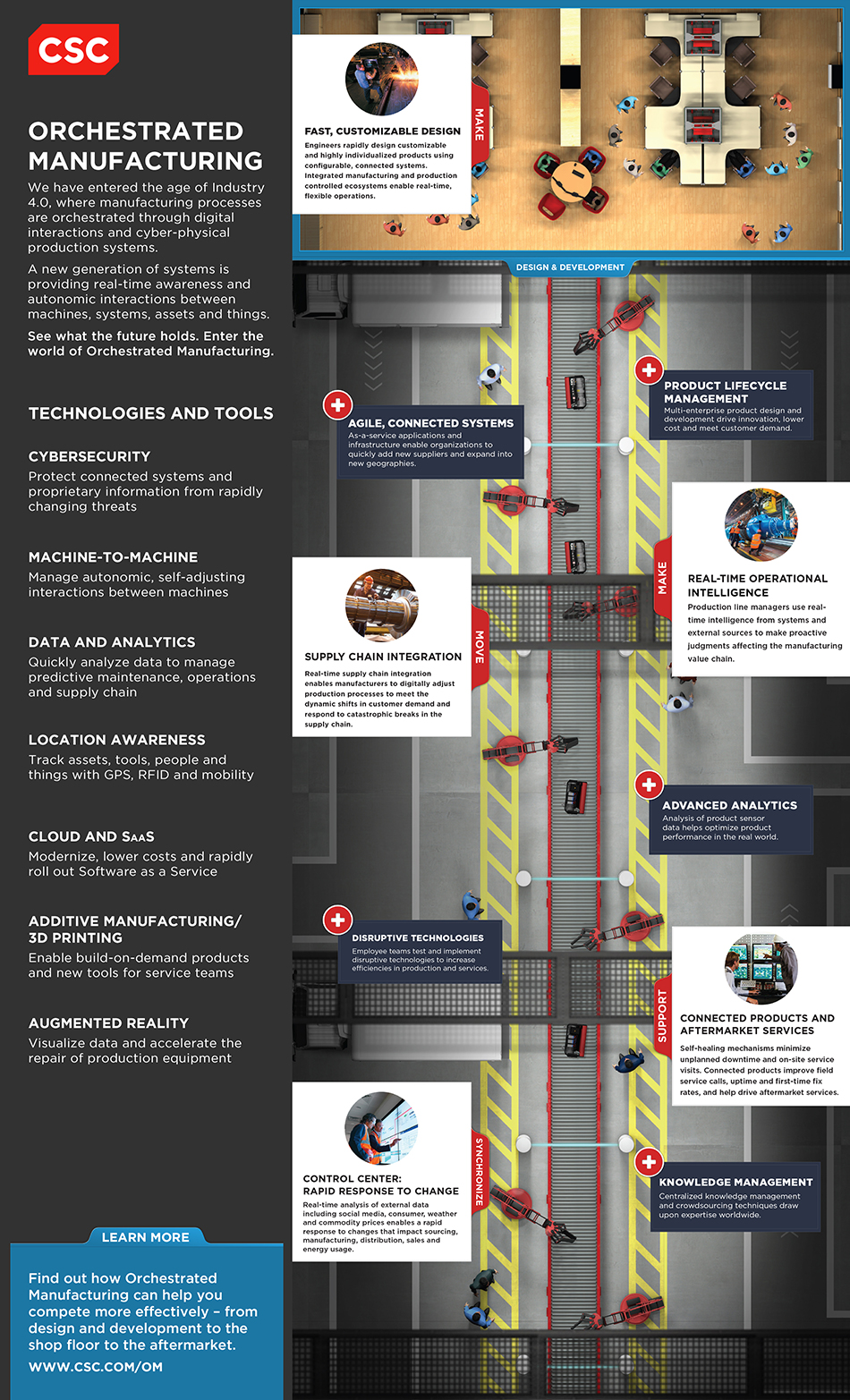If you canvas the most respected marketing decision makers, each can no doubt share examples of bold, innovative marketing programs that did not work out. But the enemy of marketing innovation isn’t failure, its repetition; repeating the same approach again and again – even if the results do not meet expectations. As you sit down to create your marketing plan for 2015 and evaluate what worked and what came up short this year, here are six ideas to consider if you are not driving the amount of visibility, buzz and sales that you expect.
- Throw out the Baby with the Bathwater. Sometimes you need to cut your losses. A poorly designed website, a poorly received message, or a poorly produced video which cost a lot of money may be hindering your ability to market your company and get your message out. Be honest about what is working and be prepared to scrap that campaign which you spent a lot of money on.
- Put an influential name or face to your product or company. This is a strategy that has been written about extensively with clear results. Our clients have contracted with celebrities including Lewis Black, Joe Torre, and Frank Abagnale to put a face to their brand. The celebrity can be leveraged for a variety of activities, including social media, customer events, and immediate recognition across ads, etc. Please reference this blog post for more on this tactic – http://bluetext.com/celebrity/.
- Sometimes the Local is the Way to Go. The content marketing train is zooming across corporate America, much to the displeasure of the PR budget. It is not the only way to get to your destination however. PR has a very important place within every marketing budget. While many consider it to be an old school tactic, the validation you can receive from a well-placed story about your product or service can be worth 10x the investment if done right. My partner Brian Lustig will be writing about this in a blog post next week.
- Go Out on a Limb with a Sponsorship. How many times have you said that my company does not have the budget to do a major sponsorship? Take a step back to look at the number of events you have sponsored with a lame table top to appease a sales representative where no viable leads came out of it. Those costs add up. Take that money and do sponsored Tweets, webinars or branded social properties, or sponsor a well-known organization that will create some buzz for your company. This can be measured in many ways and is often used to put a company, product or service on the map.
- Zig When your Market is Zagging. The best marketers are known for executing bold campaigns to stand out in crowded markets. How bold are you willing to go? Are you marketing to save your job or get your next one? I was in a pitch the other day where the CEO of a start-up SaaS company talked about taking on an entire industry.
- Go Mobile First. Anyone that tells you that you don’t need to worry about mobile visitors and site traffic has ocean front property in South Florida to sell you. Sure, we can all look at the analytics and it is true that data trumps opinion, but mobile is only getting more popular and the user experience should be well designed for a mobile world. Responsive design is clearly the direction that the industry is headed and one that you must deploy to stay relevant for the long term.
Are you ready to get started? Are you ready to break new ground with your marketing program? Don’t look now but unless your foot is on the pedal then your competitors will leave you in the rear view mirror…and that is not a place that most marketers want to be.
Are you planning to integrate or upgrade your content marketing into your online marketing strategy? Not sure where to begin? Here is a basic rundown of how to create an effective content marketing strategy.
1. Establish Your Conceptual Target
An effective content marketing strategy must begin with this first critical step. The goal is typically pursuing new customer opportunities while preserving your core customer base. Understanding who they are, where their interests lie and how to get them to take action and engage with your brand is key to developing your content strategy.
2. Don’t be a One Hit Wonder
As opposed to advertising – which is driven by “The Big Idea” – to stay fresh and engaging, your content marketing strategy needs to offer a variety of premium content on a number of contextually relevant topics When content marketing teams are under resourced, they tend to gravitate back to the big idea and get boxed into a an approach that’s not scalable long term.
3. Use an Editorial Approach
Too many content marketing programs fail in the planning phases of the program because the a long term content strategy has not been fully thought out – so the content being developed using a shoot from the hip approach tends to be more episodic than strategic. The most effective way to avoid failure is to identify specific themes for your content strategy that align with the cyclical business or personal needs of your target audience
4. Be Contextually Relevant
The content you develop must be interesting, engaging and above all else, relevant. Your conceptual target should be able to quickly connect the dots between his challenges and the capabilities you can offer to overcome them – the more contextually relevant your content is to them the easier they will be able to make that connection
5. Process Driven Approach
Since content marketing is still a relatively new approach, a lot of companies are not investing adequate resources or the defined process that planning, managing and publishing an adequate amount content requires. Building a solid content marketing workflow process, and investing in the necessary resources to implement it – whether internal or external – are critical to your success.
6. Collaboration is Key
As with any emerging marketing channel – and social media is a good example of this -there is an internal struggle over which department actually “owns” it. Until that’s figured out, many companies will make it a shared responsibility between their PR, Advertising and Creative departments – passing the content baton from one silo to the next with no clear strategy. If you must borrow the resources, make sure there is a coordinated effort to collaborate as a team on the themes, goals and structure of your content marketing program.
7. Cadence and Consistency
When creating your content strategy, be sure to decide on the frequency of your content marketing so that once your audience is engaged, they stay engaged. Having a consistent and predictable flow of content that your customer can rely on is critical to establishing brand credibility.
8. Use the Right Channels
Instead of hoping your audience stumbles upon you, be sure to publish your content where they already are – in their own environment where they will be more willing to engage. Consider promoting your content on broader social sites like Twitter can make it go viral. If the content is what readers are looking for, they won’t hesitate to share – and that’s the holy grail of content marketing.
9. Leverage SEO
A solid content marketing strategy geared toward the right audience is worthless if it doesn’t reach that audience one way or the other. One of the most effective ways to leverage that content is to employ a strong SEO strategy to incorporate keywords that your customers are using to search for the solutions you are ultimately trying to sell to them
Ever since Google’s last significant evolution of its search engine algorithm, known as Hummingbird, the marketing world has been treading water trying to understand how to drive search traffic to digital campaigns and websites. In the pre-Hummingbird era, search could be gamed by gaining multiple links back to a page and installing keywords throughout the content. So-called “Black Hat” experts charged a lot of money to get around the rules. In today’s Hummingbird era, it’s no longer only about keywords, but rather having good content with a smart keyword strategy that is relevant to the target audience. Attempting to manipulate the system through meaningless links and keyword overload no longer affects the search results.
While the Google algorithm is extremely complex, SEO itself is not complicated. It’s actually very easy to understand. In sum, Google’s algorithms are designed to serve the best, most relevant content to users. That’s the filter that any company or organization needs to use when deciding whether any particular activity that is part of your online strategy will have an impact on your SEO.
It’s just difficult to execute.
For example, if you’re thinking about blasting a request to bloggers to link back to your site, don’t bother. If they haven’t created good content, it won’t make a difference. Want to change the title of every page on your site to your key search term? It won’t work. Thinking about jamming every keyword into a blog post? If it’s not good content, don’t do it.
The challenge is determining the definition of “good content,” at least as far as Google is concerned. That’s where the hard work begins. Good content is not a subjective evaluation, but rather an analysis that the web page or blog post is relevant to users as measured both by the type of content and the extent of its sharing by other influential users. Let’s break those apart and take a closer look.
The merit of the content is important because if Hummingbird detects that it’s crammed full of keywords, or that it is copied from other sites or even within other pages of the same site, it will quickly discount the relevance. The Google algorithm will see right through those types of attempts to create SEO-weighted pages. Good content needs to be original and unique.
More importantly, good content is also a measurement of how much that content is linked to or shared by influential sites and individuals. When you have created a blog post or web page with good, relevant content, it is vital to share this with your intended audience and with influencers that they trust. This is the hard part. There are no shortcuts when it comes to developing good content and in getting it in front of your audience. Nor are there easy ways to identify trusted influencers and get the content in front of them.
For the content itself, the goal is not just to be informative and provide the types of information that the target audience is seeking, although that is important. The goal is also to have that information shared, whether via social media platforms or through other sites and feeds. That means it must be interesting and sometimes even provocative so that the intended audience takes the next step and slips it into its own networks. It should challenge the conventional wisdom, offer valuable and actionable insights and educate the audience with information not already known. And it must be relevant to the audience.
How do you find the right influencers for your audience? That’s not easy, either. At Bluetext, we do in-depth research into who is talking about the topics and issues important to our client campaigns, and then evaluate each of those potential influencers to determine the size and reach of their audience. These can include industry insiders, trade journalists and columnists, government officials, and academic experts.
A solid SEO strategy takes time and patience, and a lot of hard work. It’s not complicated, but it is difficult.
Blackphone, powered by Silent Circle – the most secure solution in mobile privacy – launched earlier this year at the Mobile World Congress with such an overwhelming response to the user privacy features delivered by the phone’s state of the art PrivatOS operating system that MIT Technology Review recognized Blackphone on its prestigious list of the “10 Breakthrough Technologies” of 2014.”
When Switzerland based Blackphone and Silent Circle sought out an agency partner to deliver their story – and the freedom of privacy their new encryption technology brings to the world – they chose Bluetext. To coincide with the announcement that Blackphone handsets have started shipping to the device’s first pre-order customers around the world, Bluetext officially launched the brand across Europe and the Middle East via a trio of in-flight campaigns featured in Lufthansa, Emirates Air and American Airlines that you will have the benefit of seeing if you are traveling along any of those carrier’e major routes across the region this summer.
The first campaign – “Privacy. Purpose Built” – highlight’s the phone’s key differentiator – a device built from the ground up by a privacy company versus a privacy ‘bolt-on’ by a device manufacturer. The inherent beauty in the phone’s elegant simplicity gave us the license to let the device itself standout as the focal point of the artwork for the campaign.
The second, “Whisper” campaign focuses on the security and peace of mind delivered across 130 countries worldwide by Silent Circle, the device’s hard core, ultrasecure PrivatOS operating system to protect what matters most…your personal privacy.
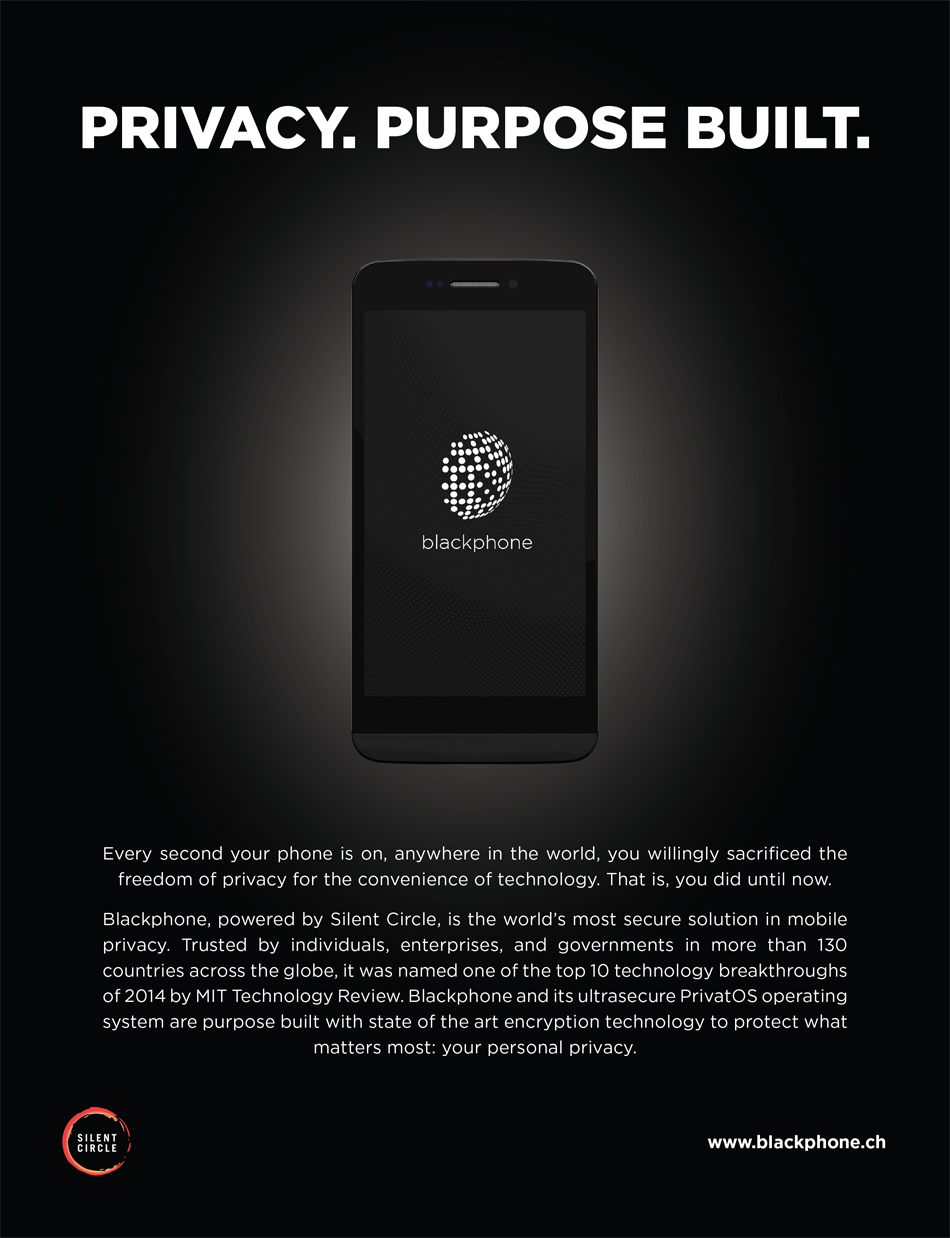

The numbers don’t lie. Traditional advertising, including online banners, print and broadcast, is becoming less effective by the minute. Business consumers know how to tune it out and have all the tools to avoid it. In your buyer’s eye, paid media is practically invisible.
So what is the alternative? First and foremost, it’s delivering content that the buyer wants and needs in order to address their challenges and understand your solution. This is the essence of today’s content marketing. It provides a steady stream of engaging content rather than traditional ads that may be intrusive and not relevant. The primary reason for this is that buyers have shown they are more apt to respond to content that addresses their pain that they opted in for versus the intrusiveness of content that is pushed on them touting a product or service they didn’t request.
Marketing allows marketers to develop a closer bond with buyers by delivering contextually relevant information that makes them more intelligent. In turn, buyers reward them with their business and loyalty. So that begs the question…isn’t it better to “own” the content rather than “rent” the real estate for traditional paid media?
There are dozens of brand studies that show content marketing generates upwards of two-and-a-half times the return on investment for every $1,000 invested in “owned” versus “rented” media. This finding makes sense based on the widely accepted assumption that most B2B buyers have already gone through 70% of their buying journey – having identified their challenge as well as potential solution providers – by the time they are ready to buy.
According to Ad Age’s BtoB Marketing Outlook Survey, 75.1 percent of B2B marketers will invest more in their content campaigns in 2014 than last year. Smart marketers are going to funnel more of their budget toward content creation, forcing them to make hard decisions about where to pull that money from. Advertising is set up to be the fall guy.
Marketers need to pay close attention to these changing dynamics. Advertising will always have a place in marketing budgets, but for the growing number of us that live and die by ROI, having an effective content marketing publishing and distribution strategy will be a top priority in 2015. What’s in your budget?
An emerging trend across business-to-business marketing is its “consumerization.” As customer expectations shift and their buying habits change, businesses that sell and market to other businesses are stealing tactics from “businesses to consumer” marketers.
Tried and true b2c marketing strategies such as user engagement, personalized content, rich media, gamification and alignment with offline events are increasingly nudging their way into b2b digital campaigns. This shift is not lost on businesses, advocacy groups and trade associations, which are all leading the charge in adapting consumerized marketing tactics to a business customer audience. They are creating digital communities to effectively tell their story, sell their products, and gain traction for their issues. These communities are designed to make complex messages more consumable, mobilize user or advocacy groups, and provide users the opportunity to join or “own” the conversation.
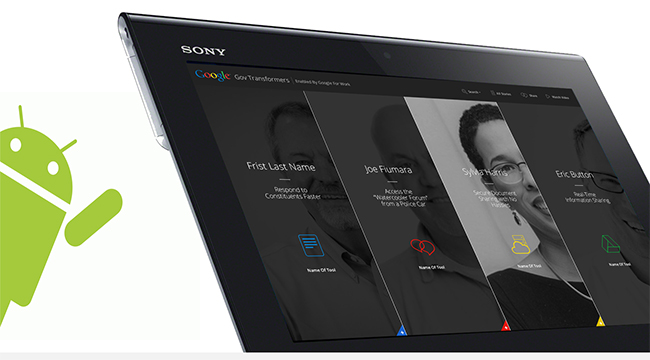
At Bluetext, our approach to developing and executing digital marketing campaigns for clients is to not be bound by conventional battle lines of business, consumer and government. Each market is surely unique, but by remaining open to innovative tactics and strategies we are consistently able to help clients’ marketing efforts stand out from the pack. Based on recent projects, we have assembled a set of core recommendations for any business or organization seeking to leverage the consumerization of b2b and advocacy marketing to impact customer buying decisions and brand awareness.
Drive Personalized Content and Experiences
By stepping back and letting your best customers and members take the lead in telling your story, the content becomes more real and personalized. One example is a campaign Bluetext developed for Google called GovTransformers that showcases a wide variety of public servants and how they are using Google’s enterprise applications. The campaign shines a spotlight on dozens of government workers all across the United States – from law enforcement to CIOs – with video profiles, photographs and written descriptions. By making customers the heroes, other customers are encouraged to share their stories.
We leveraged offline events to grow the community with a series of Hackathons in key cities around the country. Each Hackathon brings together programmers and developers over a weekend to help solve digital challenges using any developer tools they want, as long as one of Google’s enterprise apps is also part of the solution. For example, at the Denver Hackathon, one of the challenges involved automating the Colorado Disaster Assistance Center. Another challenge included designing a transparent budget data system for the state of Wyoming.
Enable Users to Join the Conversation
Giving stakeholders an easy way to join the conversation keeps them engaged and an active part of the community. We have built polling ecosystems for several clients that can span a portfolio of brand sites to access their opinions across a number of relevant issues, while giving them a platform to collect and contextualize the trends of the community through data visualizations.
For Intermedia Outdoors Network, a leading publisher of magazines for hunters, fisherman and outdoor enthusiasts, we created SportsmenVote with a Pinterest-type of format offering various issues in the form of questions that have “yes” or “no” or multiple choice answers. The results can be displayed in real-time, and a comment section is built in for those who want to expound more on the topic. The results provide an ongoing reason for the community to return to the site and engage in the dialogue, with content ready to be shared in a social “snackable” format.
Showcase Your Most Important Assets –Users
Showcasing stakeholders in their own element can be a powerful way of growing a community. The Forest Landowners Association represents families who harvest wood products from privately-owned forests that they manage. Sustainability is a key component of their effort to preserve these private forests. To help build a community of like-minded landowners with a common interest in these issues, we built a platform called Forest America. It serves as a news repository and a recruitment tool for advocacy purposes, complete with impactful videos and a simple way for families to submit their profiles.
Don’t Be Boring. Engaging Concepts & Content to Educate the Market
Govplace turned to Bluetext to develop FedInnovation, a destination designed to help government agency executives get the latest information on current technology challenges and solutions for big data, cloud, security, mobility and storage. Developed in conjunction with leading technology providers including Dell, Intel Security and VMWare, it includes exclusive content, videos, blogs, and real-time social feeds. From this platform, Govplace will drive blog posts, webinars, and other marketing programs to ensure its target audience understands the value that it, working with the leading IT providers to the Federal Government, can deliver.
Get Game
We are not talking about the next Grand Theft Auto or Call of Duty. But think about your audience and determine whether a game would engage them. Games can also throw off a lot of “social shrapnel” to drive content and interest. For Lucent Government Solutions (LGS) we designed a “Words with Friends” meets Scrabble experience to help recruit new engineers and drive awareness for the solutions they are delivering into the market.
Join the Cause – Everyone Wants to Take Action
Building a digital platform to showcase a community won’t be of much help if it’s not easy for new members to participate. We recommend offering opportunities to participate directly on the site, either through submitting your own story, taking a poll, seeking information and insight from other members of the community, or using an advocacy tool to weigh in with policy makers. What is essential is having well placed calls-to-action throughout the site so that visitors do not have to search for ways to participate. New Twitter tools like Tweet Builder increase a brand’s reach to its social properties by connecting with influencers whose posts then tie back into the digital platform. This social engagement extends the brand far beyond a single website to a wide variety of social sites.
The consumerization of b2b marketing is not about trying to fit a square peg in a round hole; instead, it represents the fact that forward-thinking businesses and organizations across every market recognize a fundamental shift in how business customers are accessing content and information, and what types of marketing initiatives will impact their buying decisions.
In an era of budget cuts and dwindling resources, hundreds of government organizations are achieving real success and showing a measurable return on investment using GovDelivery’s communications platform to communicate their messages and services.
Bluetext was hired by GovDelivery to help them reach public sector organizations who can benefit with tremendous cost savings while reaching more people, automating complex communications and driving mission value through deeper engagement with the public.
Bluetext conceived and designed a responsive landing page with an infographic demonstrating the benefits of using GovDelivery for Government agencies as the centerpiece of the campaign. We also developed a responsive email template and infographic poster to be used across many marketing channels.
CSC turned to Bluetext to design and launch an industry-specific landing page around its approach to targeting the requirements of the manufacturing industry. CSC’s vision is called Orchestrated Manufacturing, and it represents an age where manufacturing processes are orchestrated through digital interactions and cyber-physical production systems. CSC is working with clients to implement advanced solutions that leverage a new generation of systems is providing real-time awareness and autonomic interactions between machines, systems, assets and things.
Bluetext worked with CSC’s digital brand marketing team, as well as their Manufacturing industry marketing team, to design a landing page unlike anything CSC has ever launched inside of its corporate domain. It includes a modern design with one long, scrolling page to showcase the vision and its practical application to the market, and then lead visitors to download key content and interact with CSC.
At Bluetext, we find that many large companies with diverse industry focuses and solution offerings sometimes make it hard for target audiences to find exactly what they are looking for. The idea behind Orchestrated Manufacturing is for CSC to tell its story in a unique way with an online and offline strategy to drive a consistent visual message into the market. The landing page is complemented with two videos that can be used by sales teams to succinctly tell the story, as well as a highly produced poster for sharing at events.
Please check it out at www.csc.com/om. We would love to hear about how you are designing landing pages targeting unique audience groups and what strategies you are finding work best.
